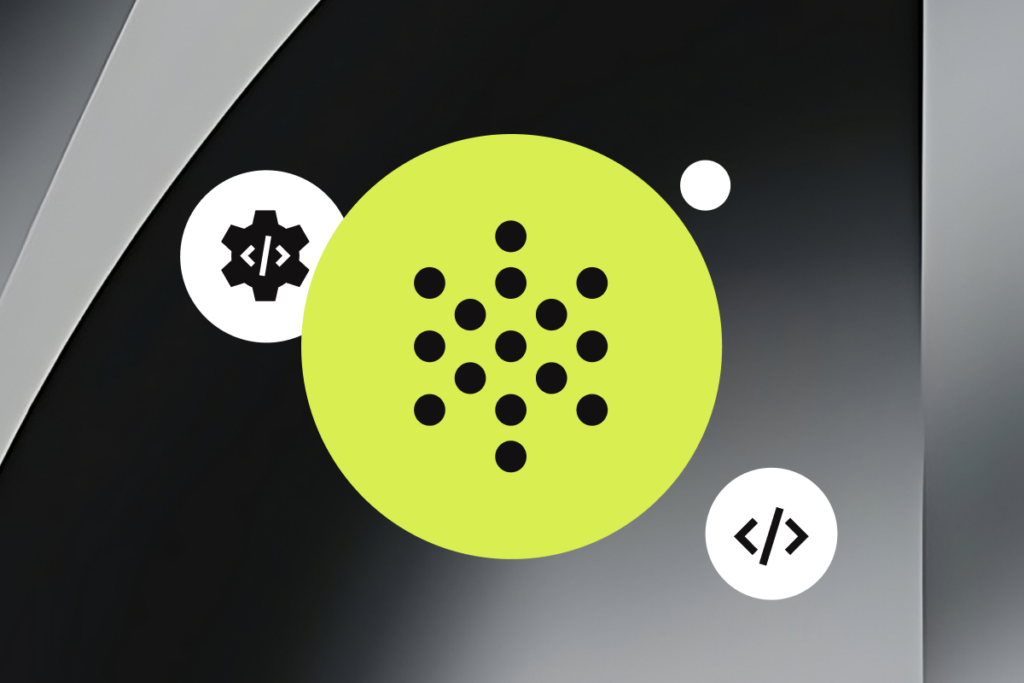Table of Contents
When assessing the impact of call center voice AI, many companies make the mistake of reviewing metrics in isolation.
You could be increasing containment rates, but if your CSAT drops or repeat callers increase, you might miss crucial insights.
In this blog, we’ll explore eight key metrics that, when reviewed together, provide meaningful insight into the impact of call center voice AI.
Efficiency metrics for call center voice AI
1. Call reduction rate
What is call reduction rate?
Call reduction rate measures the percentage of customer inquiries resolved by the voice assistant without the need for escalation to an agent.
Why does call reduction rate matter in the context of a voice assistant?
Call reduction rate directly reflects the efficiency of your voice assistant in resolving customer issues independently. However, relying only on call reduction rates may overlook factors that influence customer satisfaction. A contained query doesn’t guarantee satisfied customers if other aspects, like response time or time to resolution, are below expectations.
How does call reduction rate tell you the impact of a voice assistant?
A steadily increasing call reduction rate is a positive sign that your voice assistant is capable of handling diverse customer queries. Combining your analysis of call reduction rate with the following metrics outlined in this article will provide a more comprehensive view of the voice assistant’s impact.
How do you calculate call reduction rate?
Call reduction rate = (Number of queries contained by the voice assistant / Total number of queries) x 100
What are some ways to improve your call reduction rate?
- Monitor conversational data to identify high-volume, highly automatable calls.
- Design and introduce call center workflows specifically tailored for FAQs and routine queries to reduce the volume handled by your agents.
2. Average Speed of Answer (ASA)
What is average speed of answer?
Average speed of answer measures the average time it takes for a customer call to be answered by an agent once it has been handed off from the voice assistant. An effective voice assistant should always answer a call within 3 seconds.
Why does average speed of answer matter in the context of a voice assistant?
ASA directly reflects the impact of your voice assistant on response times. By resolving high-volume call types, agents should be able to pick up calls quicker, slashing wait times for all customers, not just those whose inquiries are fully automated.
A successful voice assistant implementation should decrease ASA by as much as 60%.
How does average speed of answer tell you the impact of a voice assistant?
A quicker response enhances customer satisfaction by reducing wait times and showcasing the voice assistant’s efficiency. Rising ASA may signal bottlenecks or inefficiencies in your contact center’s processes.
How do you calculate average speed of answer?
ASA = Total wait time for answered calls / Total number of answered calls
What are some ways to improve average speed of answer?
- Expand voice assistant capabilities: Enable the voice assistant to handle more call types, thus reducing the pressure on agents.
- Automate time-consuming parts of calls: Let the voice assistant handle caller authentication and triage to reduce the amount of time agents need to spend on each call.
- Guide customers to online resources: Implement processes for the voice assistant to direct customers to specific online resources, sharing helpful links via text or email.
3. Call abandonment rate
What is call abandonment rate?
Call abandonment rate is the percentage of tasks that are abandoned by the customer before they can be completed.
43% of contact center customers may abandon a call if left waiting in the queue for just one minute, resulting in a negative brand experience.
Why does call abandonment rate matter in the context of a voice assistant?
Call abandonment rate is a crucial indicator of how well a voice assistant engages with customers. A high abandonment rate signals issues like lengthy waiting times, misunderstood queries, or unresolved problems, impacting the overall customer experience.
Monitoring this metric ensures the voice assistant is not only functional but also positively influences user satisfaction.
How does call abandonment rate tell you the impact of your voice assistant?
A rising call abandonment rate suggests a potential gap between customer expectations and the voice assistant’s performance. If customers consistently abandon calls, consider how you could be more effective in addressing customer queries.
How do you calculate call abandonment rate?
Call abandonment rate = number of abandoned calls / Total incoming calls x 100
What are some ways to improve your abandonment rate?
- Optimize response time: Make sure the voice assistant answers all calls within 3 seconds.
- Streamline the handoff process: Review the efficiency of routing customers to the right department so the process is seamless and customers don’t need to repeat information.
- Integrate with your customer stack: Integrate with other areas of your customer stack to increase capacity to solve a broader range of customer issues, reducing the need to wait.
4. Call transfer rate
What is call transfer rate?
Call transfer rate determines how many times a customer’s call is transferred between a voice assistant and subsequent agents.
Why does call transfer rate matter in the context of a voice assistant?
While some transfers are standard procedure in the contact center, complex IVRs often lead to calls being routed to the wrong department or skill group – misrouting. These transfers between departments create increased wait times and a frustrating customer experience.
Implementing an effective voice assistant should result in fewer misroutes due to issues with automated IVR systems, leading to an overall reduction in misrouting and an overall reduction in transfers.
How does call transfer rate tell you the impact of your voice assistant?
A voice assistant should reduce call transfer rate by accurately understanding a customer’s query and seamlessly transferring them to the right member of your support team first time.
How do you calculate call transfer rate?
Call transfer rate = Number of calls transferred / total number of calls handled x 100
What are some ways to improve call transfer rate?
- Include additional disambiguation questions: Enable the voice assistant to ask clarifying questions about the job the customer is trying to get done. This will enable more accurate routing.
5. Average handle time (AHT)
What is AHT?
AHT measures the total duration an agent spends on customer interactions, from initiation to resolution. PolyAI clients have reported that 30-60% of agent time is spent answering queries that could be easily resolved online or through other, cheaper channels.
Why does AHT matter?
The longer agents spend on each call, the harder it is to answer every call and serve every customer in a timely manner. Frustrated customers get fed up and take their business elsewhere.
How does AHT tell you the impact of your voice assistant?
Launching a voice assistant should enable you to reduce AHT across all calls. Automated calls are shorter because voice assistants can more easily and quickly access information.
When a voice assistant automates the low-value part of a call, like customer order numbers, ID&V, or simple FAQs, it can drive down AHT by 20-30% and give additional capacity to your call center. Improving AHT not only drives down costs but also frees agents to serve customers with complex queries.
By implementing a voice assistant to take reservation details, Golden Nugget’s AHT was reduced by 45 seconds, enabling agents to speak to more customers more quickly.
How do you calculate AHT?
AHT = (Total talk time + hold time + after-call work time) / Number of interactions
What are some ways to improve AHT?
Identify high-volume, routine calls that a voice assistant can handle.
Partially automate calls to speed up processes for customers and agents, including ID&V, order numbers, and simple FAQs.
Bridge the gap between the phone channel and self-service options by providing useful links via text and email to specific resources that answer customer questions.
Customer experience metrics for call center voice AI
Customer experience metrics enable you to gauge how satisfied your customers are with your products, services, and brand. These measurements help you to understand the experience your customers have throughout their interactions with your organization.
6. Customer Satisfaction Score (CSAT)
What is CSAT?
CSAT measures customers’ satisfaction by asking “How would you rate your experience today?” on a scale of 1-5 or 1-10.
Why does CSAT matter in the context of a voice assistant?
CSAT reflects the quality of customer experience as reported by customers. It goes beyond the resolution of customer issues to capture customers’ overall sentiment and satisfaction when interacting with a voice assistant. High CSAT scores indicate successful issue resolution, positive engagement, and an enjoyable customer experience.
How does CSAT tell you the impact of your voice assistant?
Declining CSAT scores may suggest issues such as misinterpretation of queries or inadequate problem resolution. CSAT should be assessed along with the key metrics outlined in this article to pinpoint specific areas in the customer journey that might be impacting their experience with your brand.
How do you calculate CSAT?
CSAT = (number of satisfied responses / Total number of responses) x 100
What are some ways to improve CSAT?
Integrate with other areas of your customer tech stack to increase capacity to solve a broader range of customer issues.
Design systems that actively engage callers with a personalized experience so that they don’t feel the need to insist on speaking to an agent.
Don’t lock customers in a containment journey. Get them routed to where they need to go as quickly as possible
7. Net Promoter Score (NPS)
What is NPS?
Net promoter score is a measure of how loyal your customers are. It is typically assessed by asking customers How likely they are to recommend your product or service to a friend, on a scale of 1-10.
Why does NPS matter in the context of a voice assistant?
NPS is an indicator of how likely or unlikely your customers are to churn. Decreasing NPS is a warning sign that customers are not happy with your service and may be looking elsewhere.
How does NPS tell you the impact of your voice assistant?
Declining NPS may reflect poor voice assistant performance, where customers are becoming frustrated due to frequent misunderstandings, robotic tones, and a general feeling that they are not being supported.
How do you calculate NPS?
Responses are divided into three categories where:
Detractors – responded with 0-6
Passives – responded with 7-8
Promoters – responses with 9-10
NPS = % promoters – % detractors
What are some ways to improve NPS?
- Reduce call wait times by automating simple, high-volume inquiries.
- Design natural-sounding automated solutions that allow callers to speak however they like.
- Ask for feedback from your agents and your customers to better understand how you can improve service.
8. Customer Effort Score (CES)
What is CES?
CES is a measure of how easy or difficult customers found your service. It is typically assessed by asking customers to rate how easy it was to get their problem resolved on a 5 or 7-point scale.
Why does CES matter in the context of a voice assistant?
Making customers jump through hoops to get the support they need reflects badly on your brand. Giving customers the ability to get the information and support they need when they need it will turn customers into lifelong evangelists for your brand.
How does CES tell you the impact of your voice assistant?
A high customer effort score indicates that your voice assistant is not particularly intuitive for callers. Perhaps callers are often misunderstood, or questions are oddly phrased with little clarification.
How do you calculate CES?
CES is the percentage of customers who say it was easy or very easy to resolve their problem, scoring 4-5 on a 5-point scale, or 5-7 on a 7-point scale.
What are some ways to improve CES?
- Ensure your voice assistant can provide additional information to guide callers through transactions (e.g., can it tell customers where they can find their order number?)
- Invest in spoken language understanding (SLU) to ensure customers do not need to repeat themselves over and over again.
- Design effective handoff protocols to ensure customers can speak to agents when they need to.
Conclusion
It’s important to note that your chosen metrics depend on your specific goals. Understanding the nuances of your industry will allow you to focus on the most relevant metrics to your business.
Concentrating only on containment or cost reduction might cause you to miss important aspects of customer experience. Taking a holistic approach by considering multiple metrics creates a comprehensive understanding of how the voice assistant influences the entire contact center.




